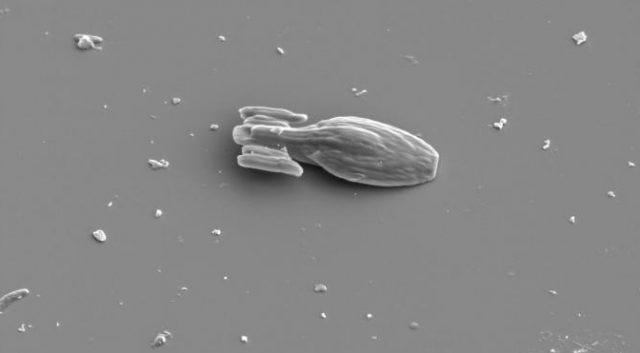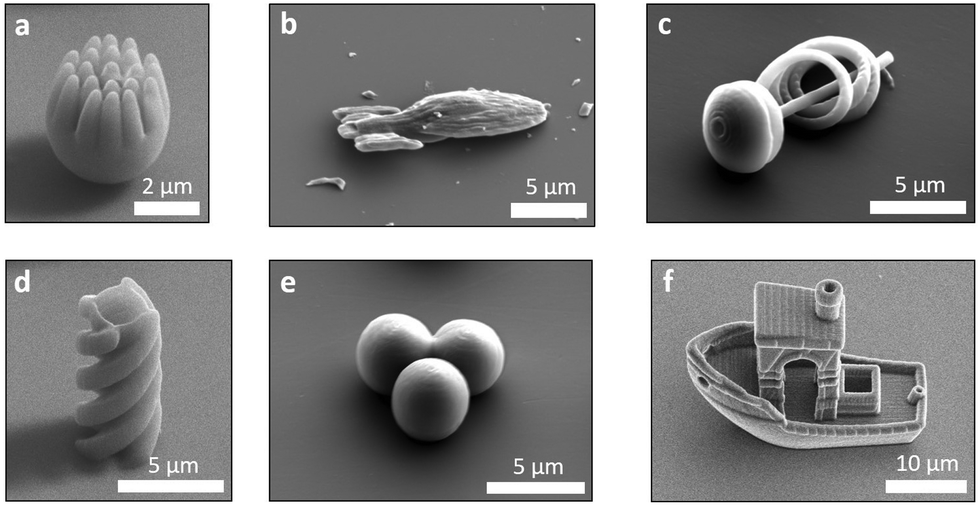# Advancements in 3D Printing: The Microscopic USS Voyager
Written on
Chapter 1: The Intriguing World of Microswimmers
The microscopic realm is teeming with extraordinary organisms, inspiring the development of groundbreaking "synthetic microswimmers." These innovative particles hold the potential to transform medicine by navigating through liquids via chemical interactions. A dedicated research team from Leiden University in the Netherlands has been diligently working on new designs for microswimmers, focusing on how various shapes can influence the performance of these nanoscale devices.

Among the shapes explored, the USS Voyager stands out. Although it lacks warp drive, it effectively propels itself using hydrogen peroxide and platinum. In the Star Trek franchise, Voyager is an Intrepid-class starship, measuring 343 meters (1,125 feet) with 15 decks and one of Starfleet's most advanced sensor systems. Despite being smaller than the iconic Galaxy-class Enterprise-D, it accommodated a crew of 160. In contrast, the miniature 3D printed version of Voyager is only 15 micrometers (0.015 millimeters) long. This miniaturization aligns perfectly with the recurring theme of shrinking starships in Star Trek.
Until this study, the majority of synthetic microswimmers had a spherical design. However, the diversity of biological microswimmers, which come in various shapes, suggests that other forms could also navigate efficiently through liquids. Biological microswimmers utilize structures like cilia or flagella for movement in multiple directions. Scientists are still unraveling the methods to replicate this functionality in synthetic designs.
Section 1.1: Innovation Through 3D Printing
The Federation starship is one of several designs produced using a process called two-photon polymerization, enabling the researchers to construct new microswimmer shapes at the nanometer scale. Propulsion is achieved through a platinum coating that reacts with hydrogen peroxide in the solution, propelling the swimmer forward.

The objective of the Leiden University study was to investigate the behaviors of microswimmers with different geometries. By manipulating the shape and placement of catalyzing surfaces, the researchers have begun to understand how to create functional synthetic microswimmers. For instance, their findings indicate that both clockwise and counterclockwise helices can move along their long axis with minimal deviation. This advancement is crucial for developing microswimmers capable of traversing the human body to deliver targeted drug therapies.
Subsection 1.1.1: Why Choose the USS Voyager?
But what motivated the choice of Voyager? Its intricate design showcases the 3D printing techniques employed in this research. According to lead author Samia Ouhajji, he made a promise to a co-author to print any shape they desired at the end of the project. Jonas Hoecht, a passionate Star Trek enthusiast, naturally selected Voyager. Its aerodynamic design makes it a fitting choice, though some might argue that the Defiant would have been a more compelling option.
Chapter 2: Exploring Future Possibilities
Now, let's delve deeper into the technology that makes this possible.
In the first video titled "How to 3D Print the USS Zheng He starship from Star Trek Picard," viewers can discover the intricacies of 3D printing techniques applied to creating starships, including the USS Zheng He.
The second video, "Project Intrepid Class Voyager," provides insights into the design and engineering of the iconic Voyager starship, showcasing its significance in the Star Trek universe.
In conclusion, the journey into the microscopic world reveals not only the potential of 3D printing but also the endless possibilities that lie ahead in the intersection of science and science fiction.